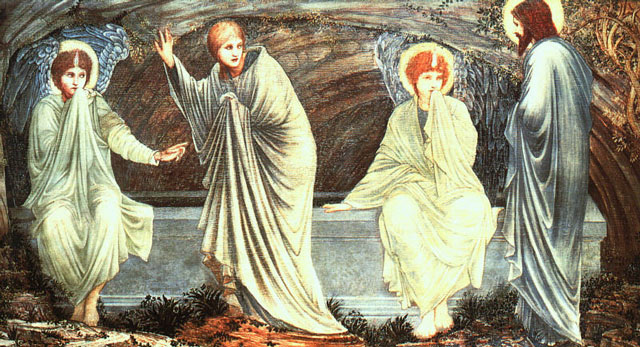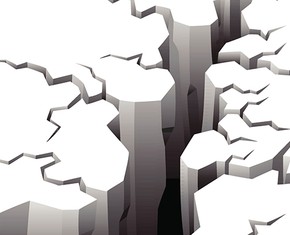The views expressed in our content reflect individual perspectives and do not represent the authoritative views of the Baha'i Faith.
In our exploration of the accounts of the resurrection in the gospels, we go now to Luke.
You’ll recall that Mark recorded three women went to Christ’s tomb and found it occupied by a single man dressed in white. In Luke’s gospel this becomes a crowd of people who go to the tomb and discover two men dressed in shining garments, before whom they bow down. Clearly Luke is building or reporting the creation of a myth.
Luke records the first appearance of Jesus occurring to two of those who went to the tomb. It happened while they were walking toward a village called Emmaus. Luke (24:15ff) wrote: “And it came to pass, that while they communed together and reasoned, Jesus himself drew near, and went with them. But their eyes were holden that they should not know him.”
A dialogue followed and Jesus scolded them: “O fools, and slow of heart to believe all that the prophets have spoken.” But still, the two did not know him. The conversation continued and eventually they reached their destination. Then as they broke bread with Jesus, finally: “their eyes were opened, and they knew Him; and He vanished from their sight”—whether by walking away, dematerializing, or disappearing from mental awareness is unclear.
This account contains all the elements of allegory. Only while the two men reason together about the ministry and death of Jesus does he draw near them. The two had to reflect on what the prophets had spoken before they could understand that Christ could rise from the dead. They had to practice the rite of communion before they could remember and know he was with them. Then, as soon as they discovered the reality that Jesus was with them spiritually he vanished from their sight. Insight removed the need for sight. A Jesus of the flesh would not “vanish” from sight, nor would it require reasoning to know him.
Luke continued by saying that the two men returned to Jerusalem, found the disciples and those with them, “and they told what things were done in the way, and how He was known unto them in breaking of bread.” The remembrance of the rite that Christ had given to remember him caused the men to know him. Luke then stated: “and as they thus spake, Jesus himself stood in the midst of them.” Note that Jesus suddenly appeared; he did not knock at the door. He appeared with the flash of an insight. The awareness of his spiritual presence appeared – not his physical body.
At “seeing” the spiritual reality of a risen Christ, Luke says that the disciples were afraid and “supposed they had seen a spirit.” Note, the disciples do not say that they had seen a body. Then, Luke records that Jesus said to his disciples: “Behold my hands and my feet, that it is I myself: handle me, and see; for a spirit hath not flesh and bones, as ye see me have.” Luke had Jesus eat fish and honeycomb with his disciples and then explained to them that all that happened had to happen as it was recorded in the scriptures. Then, Luke says, Jesus “opened their understanding, that they might understand the scriptures.”
Once again, we find mixing of physical and spiritual images. Physical bodies do not just appear. They enter and exit through doors. This image does neither. However, spirits do not have flesh and bones. But what does the comment about spirits mean? It seems to be a statement about an ancient belief in and fear of spirits. If this is true, then the rest of what follows makes sense. The Christ presence they have been made to remember and feel, the one they now begin to “see” not only in the next world but also among them still, is the same one who was among them in this world. He is not a frightful image, but a familiar one. He is the same Jesus they knew, the one with flesh and bones. It was their friend and Lord, the one who had a physical body, the one who could even now offer them the fish and honeycomb – already before them – and allow them to live and celebrate with confidence.
The Baha’i teachings explain:
Concerning the Resurrection of Christ you quote the twenty-fourth chapter of the Gospel of St. Luke, where the account stresses the reality of the appearance of Jesus to His disciples who, the Gospel states, at first took Him to be a ghost. From a Baha’i point of view the belief that the Resurrection was the return to life of a body of flesh and blood, which later rose from the earth into the sky is not reasonable, nor is it necessary to the essential truth of the disciples’ experience, which is that Jesus did not cease to exist when He was crucified (as would have been the belief of many Jews of that period), but that His Spirit, released from the body, ascended to the presence of God and continued to inspire and guide His followers and preside over the destinies of His dispensation. – The Resurrection of Christ, September, 1987, The Universal House of Justice.

















Comments
Sign in or create an account
Continue with Googleor